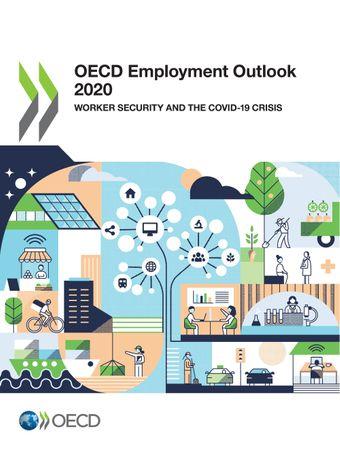
http://oecd.org/employment-outlook#report
WORKER SECURITY AND THE COVID-19 CRISIS
OECD Employment Outlook 2020
COVID-19 is causing activity to collapse and unemployment to soar
The 2020 edition of the OECD Employment Outlook focuses on worker security and the COVID-19 crisis. It provides an initial assessment of the labour market consequences of the COVID-19 outbreak and the resulting economic crisis. It also presents an overview of the emergency labour market and social policy measures implemented by OECD countries and discusses directions for further policy adaptation as countries move out of lockdown.
The 2020 edition of the OECD Employment Outlook focuses on worker security and the COVID-19 crisis.
Chapter 1 provides an initial assessment of the labour market consequences of the COVID-19 outbreak and the resulting economic crisis. It also presents an overview of the emergency labour market and social policy measures implemented by OECD countries and discusses directions for further policy adaptation as countries move out of lockdown.
Chapter 2 investigates the uneven access to unemployment benefits for workers in part-time and less stable jobs, which often accentuates the hardship they face in times of crisis, and discusses the difficult balance between work incentives and income security.
Chapter 3 provides a comparative review of employment protection legislation (EPL) across OECD countries by developing a new version of the OECD's EPL indicators, which now include an improved assessment of regulations for collective redundancies, unfair dismissals and enforcement issues.
Chapter 4 takes a fresh look at job polarisation, and in particular the hollowing out of jobs in middle-skill occupations.
Finally, Chapter 5 examines the changing labour market outcomes for middle-education vocational, education and training graduates, whose labour market perspectives are challenged by the contraction of jobs in middle-skill occupations.
While millions have been furloughed or moved onto reduced hours, millions of others have lost their jobs entirely, with little improvement in sight.
Unemployment will remain high into 2021
Unemployment is projected to reach nearly 10% in OECD countries by the end of 2020, up from 5.3% at year-end 2019, and to go as high as 12% should a second pandemic wave hit. A jobs recovery is not expected until after 2021.
Whether because of higher unemployment or people working fewer hours, the impact of the pandemic on jobs has not been felt to the same extent in all countries.
Some countries hit worse than others
In some countries, employers used job retention programmes to cut hours while allowing workers to keep their pay and jobs; there, it is likely that the full impact of the pandemic is yet to be felt. In others, there have been unprecedented leaps in unemployment, but many workers will return to their jobs (or to new ones) as economies re-open and activity picks up.
Select a country to view its unemployment data, then click the Country Note button below the chart to learn more.










Add new comment